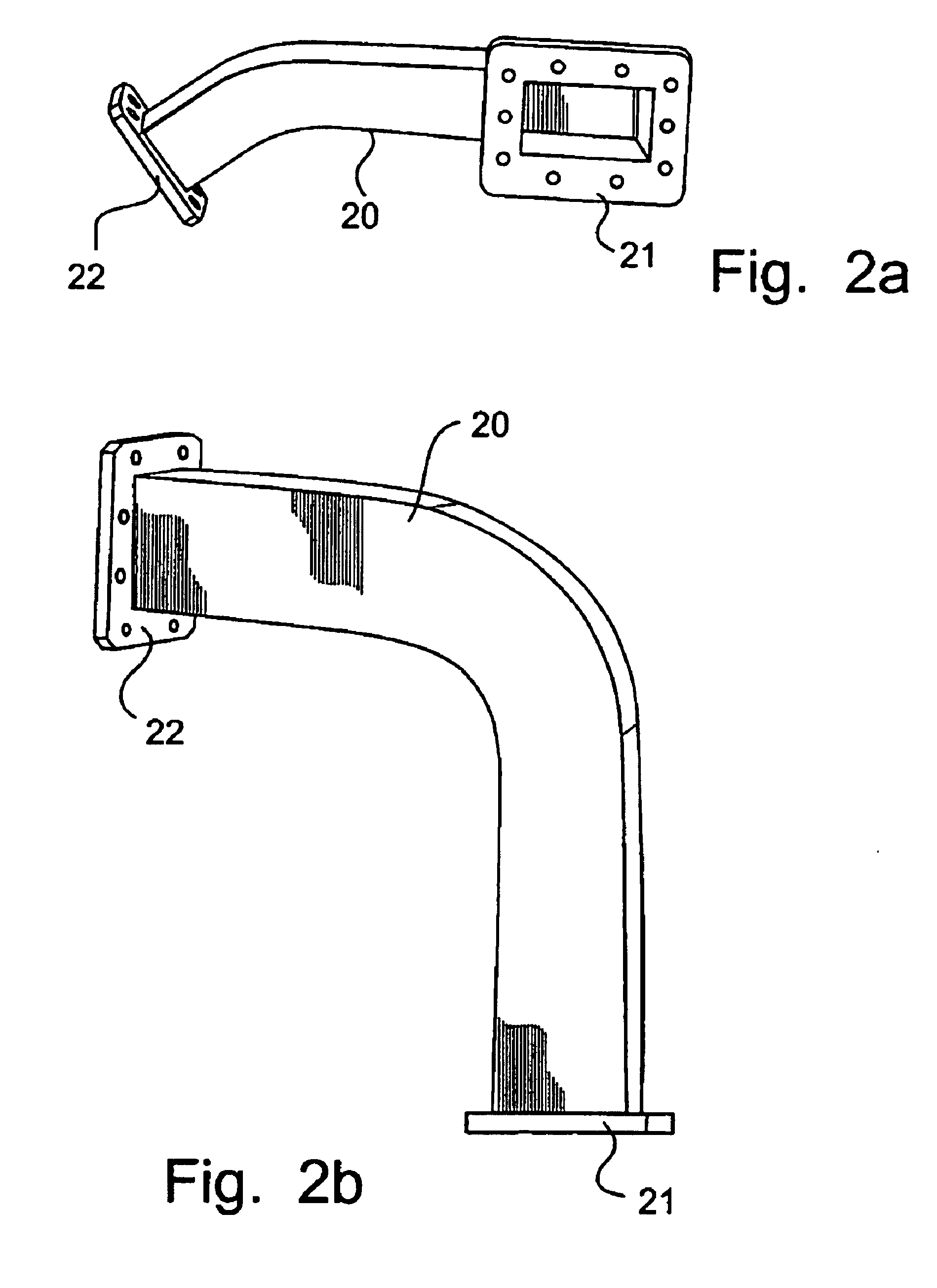Microwave components
a technology of micro-wave components and components, which is applied in the direction of waveguide horns, electrical appliances, waveguide type devices, etc., can solve the problems of high labor intensity, high cost, and time-consuming to manufacture each component, and achieves the effects of increasing the usability of each product, improving the possibility of mass production, and dimensional tolerance and thermal stability
- Summary
- Abstract
- Description
- Claims
- Application Information
AI Technical Summary
Benefits of technology
Problems solved by technology
Method used
Image
Examples
Embodiment Construction
The invention concerns microwave components with a new, improved structure, and a microwave filter, a waveguide and a horn antenna according to the invention will now be described in more detail.
FIG. 1a schematically shows a microwave filter for base stations for mobile telephony according to the invention, comprising a microwave component with a cavity, in this case a filter casing 10, and electric connections, in this case connecting flanges (not shown), arranged on at least one side of said cavity. The microwave filter has a wall construction which is schematically shown in FIG. 1b. The wall comprises on the outside an outer support structure A made of a cast material, such as a castable metal or a ceramic or plastic material. It is, however, also possible to use copper or other materials which are not cast as the outer support structure. The material should be chosen so that the outer support structure has such dimensional tolerance and thermal stability that electric requiremen...
PUM
| Property | Measurement | Unit |
|---|---|---|
| size | aaaaa | aaaaa |
| thickness | aaaaa | aaaaa |
| thickness | aaaaa | aaaaa |
Abstract
Description
Claims
Application Information
 Login to View More
Login to View More - R&D
- Intellectual Property
- Life Sciences
- Materials
- Tech Scout
- Unparalleled Data Quality
- Higher Quality Content
- 60% Fewer Hallucinations
Browse by: Latest US Patents, China's latest patents, Technical Efficacy Thesaurus, Application Domain, Technology Topic, Popular Technical Reports.
© 2025 PatSnap. All rights reserved.Legal|Privacy policy|Modern Slavery Act Transparency Statement|Sitemap|About US| Contact US: help@patsnap.com



